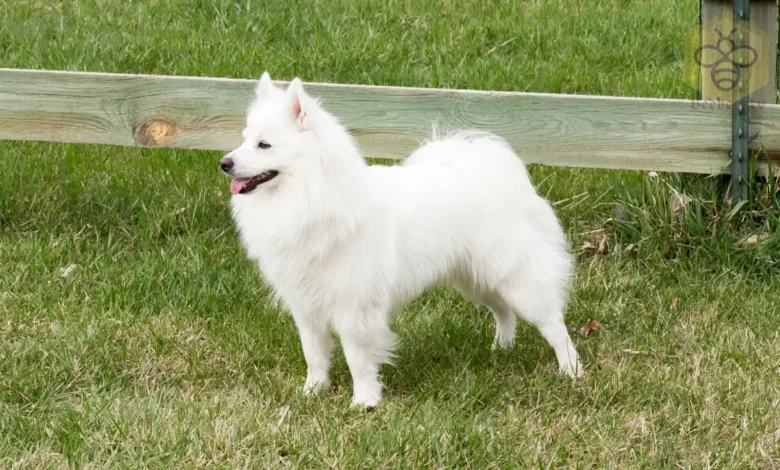American Eskimo Dog: A Bundle of Fluff and Fun

American Eskimo Dog: A Charming and Energetic Companion
American Eskimo Dog
Introduction
The American Eskimo Dog, affectionately known as the “Eskie,” is a beautiful, intelligent, and affectionate breed. Known for its fluffy white coat, expressive eyes, and cheerful demeanor, the Eskie is a favorite among dog enthusiasts. Despite its name, the breed is not from Alaska or associated with the Eskimo culture but is instead a descendant of German Spitz breeds. This versatile dog excels in various roles, from a loyal family companion to a skilled performer in agility and obedience.
Scientific Overview
Scientific Name
The American Eskimo Dog is classified as Canis lupus familiaris.
Common Name
American Eskimo Dog or “Eskie.”
Scientific Classification
| Kingdom | Animalia |
| Phylum | Chordata |
| Class | Mammalia |
| Order | Carnivora |
| Family | Canidae |
Types of American Eskimo Dogs
The breed comes in three sizes, all sharing similar traits:
- Toy: 9-12 inches tall.
- Miniature: 12-15 inches tall.
- Standard: 15-19 inches tall.
History and Origins
The American Eskimo Dog traces its roots to Germany, where it was originally bred as part of the Spitz family. Immigrants brought these dogs to the United States in the 19th century, where they became popular for their intelligence and agility. Renamed the American Eskimo Dog in the early 20th century, the breed gained fame performing in circuses due to its striking appearance and trainability.
Physical Characteristics
Size and Weight
- Height: Varies based on size (Toy, Miniature, Standard).
- Weight: 6-35 pounds, depending on size.
Appearance
The Eskie is a strikingly beautiful dog with a double-layered, fluffy white coat that provides excellent insulation. It has a wedge-shaped head, pointed ears, and dark, almond-shaped eyes. Its curled tail, carried over the back, adds to its elegant appearance.
Temperament and Behavior
American Eskimo Dogs are lively, intelligent, and friendly. They are highly social and form strong bonds with their families, making them excellent companions. However, they can be wary of strangers, making them good watchdogs. Their intelligence and eagerness to learn make them highly trainable, though their energetic nature requires regular stimulation.
Diet and Feeding Habits
The Eskie thrives on a balanced diet rich in high-quality proteins, healthy fats, and essential nutrients. Portion control is important to maintain their ideal weight, especially since they are prone to obesity if overfed. Their food intake should be adjusted based on size, age, and activity level.
Training and Exercise Needs
Training
American Eskimo Dogs are quick learners and excel in obedience training. Positive reinforcement, such as treats and praise, works best. Early socialization is essential to prevent shyness or excessive barking. They also do well in advanced training like agility, tricks, and even canine sports.
Exercise
Daily physical and mental exercise is crucial for this active breed. A brisk walk, playtime in a secure yard, or interactive games like fetch will keep them happy. They also enjoy activities that challenge their minds, such as puzzle toys or training sessions.
Living Environment
Eskie dogs adapt well to various living conditions, from apartments to homes with yards. However, they thrive in environments where they receive ample attention and interaction. Their thick coat makes them more comfortable in cooler climates, but they should not be left outdoors for extended periods.

Health and Lifespan
The American Eskimo Dog is generally healthy, but it can be prone to specific conditions:
- Hip Dysplasia: Common in medium and large breeds.
- Progressive Retinal Atrophy (PRA): A genetic eye condition.
- Allergies: Sensitivity to certain foods or environmental triggers.
- Obesity: Managed with a proper diet and regular exercise.
With proper care, their lifespan ranges from 12-15 years.
Grooming Needs
The Eskie’s dense double coat requires regular grooming to prevent mats and tangles. Weekly brushing is sufficient for maintenance, but daily brushing is recommended during shedding seasons. Regular ear cleaning, nail trimming, and dental care are also important.
Role as a Companion
The American Eskimo Dog is a versatile breed, excelling as both a family pet and a working dog. Its affectionate nature and intelligence make it a wonderful companion, while its alertness and protective instincts make it a reliable watchdog.
Popularity and Recognition
The breed is recognized by major kennel clubs, including the American Kennel Club (AKC), where it is classified in the Non-Sporting Group. Its beauty, intelligence, and adaptability have contributed to its popularity among dog lovers.
FAQs About American Eskimo Dogs
- Are American Eskimo Dogs good with children?
Yes, they are playful and gentle, making them great companions for families with kids. - Do Eskies require a lot of grooming?
Yes, their double coat needs regular brushing to stay clean and tangle-free. - Are they easy to train?
Absolutely! Their intelligence and eagerness to please make training relatively easy. - Do they bark a lot?
Eskies are alert and may bark to warn off strangers, but proper training can manage excessive barking. - Can Eskies adapt to apartment living?
Yes, as long as they get enough exercise and mental stimulation daily.
Conclusion
The American Eskimo Dog is a delightful breed that combines beauty, intelligence, and a loving personality. Whether performing tricks, protecting their family, or simply being a loyal companion, Eskies excel in every role they undertake. With proper care, training, and attention, they bring immense joy to their owners, making them a cherished addition to any household.


